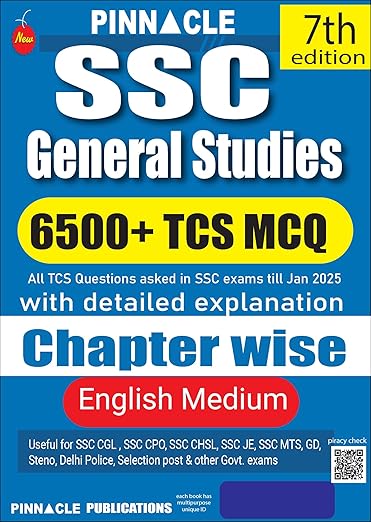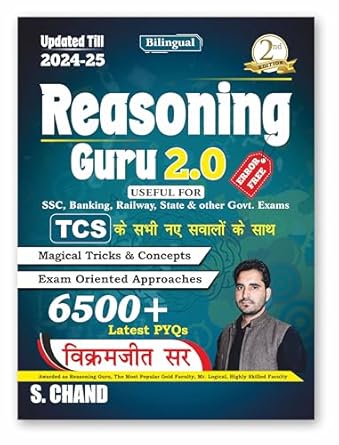Consider the two sets P = {a,b,c} and Q = {Ali, Bhanu, Binoy, Chandra, Divya}.
The cartesian product of P and Q has 15 ordered pairs which can be listed as P × Q = {(a, Ali),(a,Bhanu), (a, Binoy), ...,
(c, Divya)}. We can now obtain a subset of P × Q by introducing a relation R between the first element x and the
second element y of each ordered pair ( x , y) as R= { (x,y) : x is the first letter of the name  .Then R = {(a, Ali), (b, Bhanu), (b, Binoy), (c, Chandra)}A visual representation of this relation R (called an arrow diagram) is shown in Fig 2.4
.Then R = {(a, Ali), (b, Bhanu), (b, Binoy), (c, Chandra)}A visual representation of this relation R (called an arrow diagram) is shown in Fig 2.4
Definition: A relation R from a non-empty set A to a non-empty set B is a subset of the cartesian product A×B. The subset is derived by describing a relationship between the first element and the second element of the ordered pairs in A×B. The second element is called the image of the first element. or
The set of all first elements of the ordered pairs in a relation R from a set A to a set B is called the domain
of the relation R.. or
Definition: The set of all second elements in a relation R from a set A to a set B is called the range of the relation R. The whole set B is called the codomain of the relation R. Note that range ⊆ co-domain.
Note:
- A relation may be represented algebraically either by the Roster method or by the Set-builder method.
- An arrow diagram is a visual representation of a relation.
Important Point: The total number of relations can be define from a set A to a set B is the number of possible subset of a A*B. If n(A) = P and n (B) = q , then n(A*B) = pq and the total number of relation is 2pq
Relations and Functions Examples
Example: Let A = {1,2,3,4,5,6}.Define a relation R from A to A by R = {(x,y): y = x+1}
- Depict the relation using an arrow diagram.
- Write down the domain , codomain and range of R
Solution:
- By the definition of the relation R{(1,2),(2,3),(3,4),(4,5),(5,6)}.
The corresponding arrow diagram is shown in Fig 2.5. - We can see that the
domain ={1, 2, 3, 4, 5,} Similarly, the range = {2, 3, 4, 5, 6} and the codomain = {1, 2, 3, 4, 5, 6}
Functions
In this Section, we study a special type of relation called function. It is one of the most important concepts in mathematics. We can, visualise a function as a rule, which produces new elements out of some given elements. There are many terms such as ‘map’ or ‘mapping’ used to denote a function.
Definition: A relation f from a set A to a set B is said to be a function if every element of set A has one and only one image in set B. In other words, a function f is a relation from a non-empty set A to a non- empty set B such that the domain of f is A and no two distinct ordered pairs in f have the same first element.
If f is a function from A to B and (a, b) ∈ f, then f (a) = b, where b is called the image of a under f and a is called the preimage of b under f. The function f from A to B is denoted by f: A B.
Points to be Remember
- Ordered pair A pair of elements grouped together in a particular order .
- Cartesian product A × B of two sets A and B is given by A × B = {(a,b): a∈A, b ∈ B} in In particular
R× R= {(x,y): x,y ∈R}and R× R× R= (x, y, z): x, y, z∈ R} and R× R× R= (x, y, z): x, y, z∈ R}- If (a, b) = (x, y), then a = x and b = y .
- If n(A) = p and n(B) = q , then n (A × B) = pq
- A × φ = φ
- In general, A × B ≠ B × A.
- Relation A relation R from a set A to a set B is a subset of the Cartesian product A × B obtained by describing a relationship between the first element x and the second element y of the ordered pairs in A × B.
- The image of an element x under a relation R is given by y, where (x, y) ∈ R,
- The domain of R is the set of all first elements of the ordered pairs in a relation R.
- The range of the relation R is the set of all second elements of the ordered pairs in a relation R.
- Function: A function f from a set A to a set B is a specific type of relation for which every element x of set A has one d 0nly one image y in set B. write f: A→B, where f(x) = y.
- A is the domain and B is the co domain of f.
(f +g) (x) = f (x) +g(x), x ∈X
(f –g) (x) = f (x) – g(x), x ∈X
(f.g) (x) = f (x) .g (x), x ∈X
(kf) (x) =kf (x) ), x ∈ X, where kis a real number.
Relations and Functions Questions from Previous Year Exams
Quiz-summary
0 of 14 questions completed
Questions:
- 1
- 2
- 3
- 4
- 5
- 6
- 7
- 8
- 9
- 10
- 11
- 12
- 13
- 14
Information
Relation and function
You have already completed the quiz before. Hence you can not start it again.
Quiz is loading...
You must sign in or sign up to start the quiz.
You have to finish following quiz, to start this quiz:
Results
0 of 14 questions answered correctly
Your time:
Time has elapsed
You have reached 0 of 0 points, (0)
| Average score |
|
| Your score |
|
Categories
- Not categorized 0%
- 1
- 2
- 3
- 4
- 5
- 6
- 7
- 8
- 9
- 10
- 11
- 12
- 13
- 14
- Answered
- Review
-
Question 1 of 14
1. Question
1 pointsThe number of subsets {p, q, r, s} will be .
Correct
A = {P, Q, R, S} , n(p[A]) =
 Incorrect
Incorrect
A = {P, Q, R, S} , n(p[A]) =

-
Question 2 of 14
2. Question
1 pointsThe number of proper subset of {a, b, c, d} will be .
Correct
A = {a,b, c, d} , number of proper subset =
 Incorrect
Incorrect
A = {a,b, c, d} , number of proper subset =

-
Question 3 of 14
3. Question
1 pointsif
 then solution of the set the equation x+2 = 0 isCorrect
then solution of the set the equation x+2 = 0 isCorrect
x +2 = 0 ,

 Incorrect
Incorrect
x +2 = 0 ,


-
Question 4 of 14
4. Question
1 pointsif f:
 then g of (x) =Correct
then g of (x) =Correct
f(x) = x +1 and
 and g (f(x)) = g(x + 1) =
and g (f(x)) = g(x + 1) =  Incorrect
Incorrect
f(x) = x +1 and
 and g (f(x)) = g(x + 1) =
and g (f(x)) = g(x + 1) = 
-
Question 5 of 14
5. Question
1 pointsif :
 then fog(x) =Correct
then fog(x) =Correct
 is given and fog(x) = f (g(x)) =
is given and fog(x) = f (g(x)) = 
=![\log_{e}e^{x}=x\log_{e}e=x\: \left [\because \log_{e}e=1 \right ]](https://questionpaper.org/wp-content/plugins/latex/cache/tex_eda6a5f727a64801d6e98d24cb45f08b.gif) Incorrect
Incorrect
 is given and fog(x) = f (g(x)) =
is given and fog(x) = f (g(x)) = 
=![\log_{e}e^{x}=x\log_{e}e=x\: \left [\because \log_{e}e=1 \right ]](https://questionpaper.org/wp-content/plugins/latex/cache/tex_eda6a5f727a64801d6e98d24cb45f08b.gif)
-
Question 6 of 14
6. Question
1 pointsif f:
 hen the value of
hen the value of  =Correct
=Correct


 Incorrect
Incorrect



-
Question 7 of 14
7. Question
1 pointssuppose f :
 be such that
be such that  then f(x + y)=Correct
then f(x + y)=Correct
 Incorrect
Incorrect

-
Question 8 of 14
8. Question
1 pointsf :
 then
then  (x)Correct
(x)Correct

 Incorrect
Incorrect


-
Question 9 of 14
9. Question
1 pointsLet A = {1, 3 , 5 ,7, 9} and B = {7, 9, 11} then A - B =
Correct
A - B = {1, 3 , 5 ,7, 9} - {7, 9, 11} = {1, 3, 5}
Incorrect
A - B = {1, 3 , 5 ,7, 9} - {7, 9, 11} = {1, 3, 5}
-
Question 10 of 14
10. Question
1 pointsf:
 then
then  Correct
Correct
Df = R ,
 Incorrect
Incorrect
Df = R ,

-
Question 11 of 14
11. Question
1 pointsIf f(x) =
 =Correct
=Correct
if in the above function x - 4
 0 then f(x) exist
0 then f(x) exist
x - 4 > 0 x > 0 ,![D_{f}=\left [ 4,\infty \right]](https://questionpaper.org/wp-content/plugins/latex/cache/tex_34adeda029f5eb9a4804b6271ad90b5f.gif) Incorrect
Incorrect
if in the above function x - 4
 0 then f(x) exist
0 then f(x) exist
x - 4 > 0 x > 0 ,![D_{f}=\left [ 4,\infty \right]](https://questionpaper.org/wp-content/plugins/latex/cache/tex_34adeda029f5eb9a4804b6271ad90b5f.gif)
-
Question 12 of 14
12. Question
1 pointsn(A) = 8 ;
 = 56 then n(B) =Correct
= 56 then n(B) =Correct
 = n(A).n(B) =
= n(A).n(B) =
56 = 8 .n (B) = n(B) = 7Incorrect
 = n(A).n(B) =
= n(A).n(B) =
56 = 8 .n (B) = n(B) = 7 -
Question 13 of 14
13. Question
1 pointsIf U = {1, 2 ,......10} then
 =Correct
=Correct
 = U - A = {1 ,2 ,......,10}- {3, 4,5, 7 ,9} = {1, 2 , 6, 8 ,10 }Incorrect
= U - A = {1 ,2 ,......,10}- {3, 4,5, 7 ,9} = {1, 2 , 6, 8 ,10 }Incorrect
 = U - A = {1 ,2 ,......,10}- {3, 4,5, 7 ,9} = {1, 2 , 6, 8 ,10 }
= U - A = {1 ,2 ,......,10}- {3, 4,5, 7 ,9} = {1, 2 , 6, 8 ,10 } -
Question 14 of 14
14. Question
1 pointsIf f :
 then f of (-1) =Correct
then f of (-1) =Correct
 , f of (x) = f(f(x)) =
, f of (x) = f(f(x)) = 
f of(-1) = Incorrect
Incorrect
 , f of (x) = f(f(x)) =
, f of (x) = f(f(x)) = 
f of(-1) =
Relations and Functions Video Lecture





0 Comments